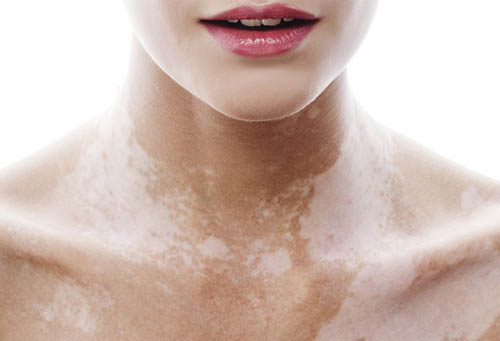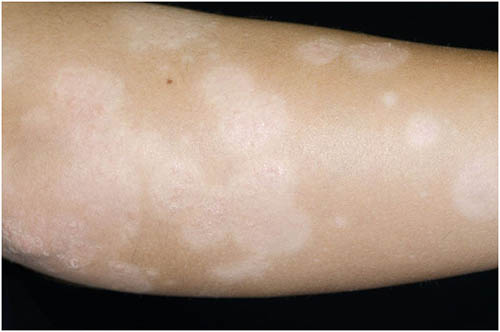Dyschromia of the skin
Dyschromias are any changes in skin color resulting from an overabundance or deficiency of pigment. They are acquired (for example, hemosiderin, carotene) and congenital (albinism, etc.); acquired, in turn, are divided into primary and secondary.
 Symptoms
Symptoms
Dyschromias can manifest themselves both in the form of increased pigmentation (hyperchromia), weakening (hypochromia), and its complete absence of skin color (the so-called achromia, or depigmentation). The duration of their presence on the skin depends on the causes of their appearance: congenital dyschromias persist throughout life (albinism, pigmented nevi), acquired ones can disappear after some time (although, depending on the cause, they sometimes remain for life).
Causes of occurrence
First of all, you should determine what causes skin pigmentation. It contains four pigments: brown - melanin (found mainly in the basal layer of the epidermis), yellow - carotene (in the keratinocytes of the epidermis), red - oxygenated hemoglobin (in the capillaries of the skin), blue - reduced hemoglobin (located in the skin venules). Sometimes a fifth pigment is also isolated - melanoid, a breakdown product of melanin. Most often, dyschromias are caused by excessive or insufficient formation of melanin, less often - by excessive deposition in the skin of other pigments (carotene, hemosiderin, bilirubin), as well as various substances from the outside (coal particles, dyes, etc.).
 Treatment
Treatment
In the fight against excessive or insufficient pigmentation, prevention is first of all important - protecting the skin from exposure to sunlight with special creams. If the sun exposure has already made itself felt, you should use whitening cosmetics. From the means of modern cosmetology, the greatest result can be achieved with peels - depending on the complexity of the problem, superficial, middle or deep peeling is chosen. Of all the variety of types of peels, only a specialist will help you to choose the most suitable - enzymatic, chemical, diamond, retinoic, ultrasonic, laser. The technology of mesotherapy is successfully used for this problem - the introduction of drugs with a whitening effect by injection. In the most extreme cases, only a surgical method remains - skin transplantation in the area of dyschromia.


